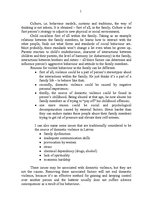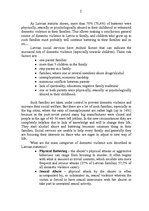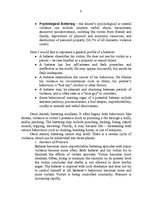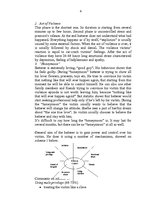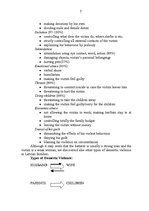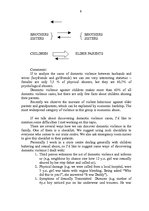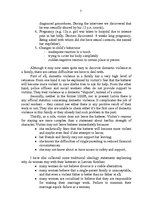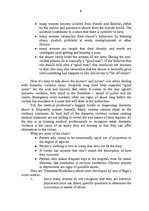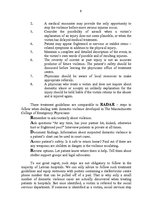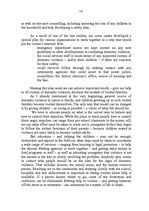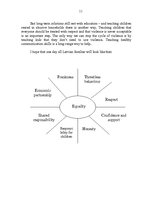-
Domestic Violence
Culture, i.e. behaviour models, customs and traditions, the way of thinking is not inborn. It is obtained – first of all, in the family. Culture is the first person’s strategy to adjust to new physical or social environment.
Child socializes first of all within the family. Taking as an example relations between the family members, he learns how to interact with the other people, finds out what forms and standards of social behaviour are. Most probably, these standards won’t change a lot even when he grows up. Parents reaction to child’s misbehaviour, character of interactions between children and their parents, the level of harmony (or disharmony) in the family, interactions between brothers and sisters – all these factors can determine and influence person’s aggressive behaviour and attitude to the family members.
Reasons for violent behaviour in the family can be different:
first of all, violence could be a part of person’s stereotypes about the interactions within the family. He just thinks it’s a part of a family life – to behave like that;
secondly, domestic violence could be caused by negative personal experience;
thirdly, the source of domestic violence could be found in person’s childhood. Being abused at that age, he now abuses his family members as if trying to “pay off” his childhood offences;
one more reason could be social and psychological decompensation caused by external factors. Stress harder than they can endure makes these people abuse their family members trying to get rid of pressure and elevate their self-esteem.
These issues may be associated with domestic violence, but they are not the causes. Removing these associated factors will not end domestic violence, because it’s an effective method for gaining and keeping control over another person and the batterer usually does not suffers adverse consequences as a result of his behaviour.
As Latvian statistic shows, more than 70% (70,4%) of batterers were physically, sexually or psychologically abused in their childhood or witnessed domestic violence in their families. This allows making a conclusion: general source of domestic violence in Latvia is family, and children who grow up in such families most probably will continue battering in their families and so on.…
Darbs atspoguļo vardarbības rašanas mehānismus ģimenē, parāda attiecības. starp varmaku un upuri, atspoguļo medicīniska personāla lomu šīs problēmas risināšanā.Angļu valodā.

